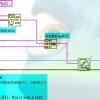Turn your front panel into an interactive HTML5 site
-
Similar Content
-
- 3 replies
- 2,600 views
-
- 0 replies
- 3,988 views
-
- 11 replies
- 8,718 views
-
- 2 replies
- 6,706 views
-
- 237 replies
- 137,495 views
-





Recommended Posts
Join the conversation
You can post now and register later. If you have an account, sign in now to post with your account.